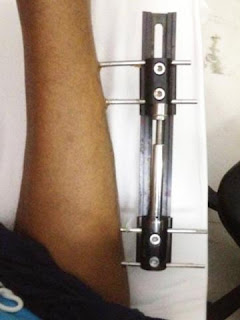The Height Advantage: Limb Lengthening Surgery Unveils New Possibilities
Introduction
Are you unhappy with your height and find yourself wishing for a few extra inches? If so, you're not alone. Many people desire to be taller, as height is often associated with confidence and success. While genetics play a significant role in determining our height, advancements in medical science have opened up new possibilities. Limb lengthening surgery is an innovative procedure that offers hope to those seeking a height advantage. In this article, we will explore the world of limb-lengthening surgery, including its benefits, risks, the recovery process, and the future of this fascinating field.
Understanding Limb Lengthening Surgery
Limb lengthening surgery, also known as stature lengthening or limb extension, is a procedure that aims to increase an individual's height by surgically lengthening their bones. It involves carefully breaking the bone and gradually separating the two ends. The body's natural healing process fills in the gap with new bone and tissue, resulting in increased length.
Reasons for Pursuing Limb Lengthening Surgery
There are various reasons why individuals consider limb lengthening surgery. Some people may have a strong desire to enhance their appearance and boost their self-esteem. Others may have a medical condition, such as dwarfism or limb length discrepancy, which can affect their mobility and quality of life. Limb lengthening surgery can provide a solution for these individuals, helping them achieve a more proportionate and functional body.
The Procedure: How Limb Lengthening Surgery Works
Limb lengthening surgery is a complex procedure that requires careful planning and execution. It typically involves the following steps:
Pre-operative Evaluation: Before undergoing surgery, patients undergo a thorough evaluation to determine their suitability for the procedure. This includes assessing their overall health, bone quality, and psychological readiness.
Bone Osteotomy: The surgeon makes a small incision and precisely cuts the bone to create a controlled fracture.
Fixation Devices: Specialized devices, such as external fixators or intramedullary nails, are used to stabilize the broken bone segments. These devices provide support and allow for controlled distraction.
Distraction Phase: Over a period of several weeks or months, the bone ends are gradually separated by small increments. This process stimulates the growth of new bone and soft tissue.
Consolidation Phase: After achieving the desired length, the distraction phase is followed by a consolidation period. During this time, the bone gradually solidifies and becomes stronger.
Types of Limb-Lengthening Techniques
There are different techniques employed in limb lengthening surgery. The choice of technique depends on various factors, including the patient's age, desired lengthening, and the bones involved. The two primary methods used are:
External Fixation: This technique involves the use of an external frame, which is attached to the bone through pins or wires. The frame provides stability and allows for controlled distraction.
Internal Lengthening: In this approach, an intramedullary nail or rod is surgically implanted within the bone. The nail has a telescopic design


This article wonderfully highlights the transformative potential of limb lengthening surgery! It’s inspiring to see how this innovative procedure can help individuals gain confidence and improve their quality of life. For those interested in exploring options, Height Increase Info is a great resource for details on limb lengthening in India, including the cost of limb lengthening surgery and finding a qualified limb lengthening doctor. Thanks for shedding light on such an impactful topic.
ReplyDeleteThanks for sharing this! I’ve been researching height surgery side effects and would love to hear from anyone who’s undergone the procedure. What were your experiences with recovery and any complications?
ReplyDelete